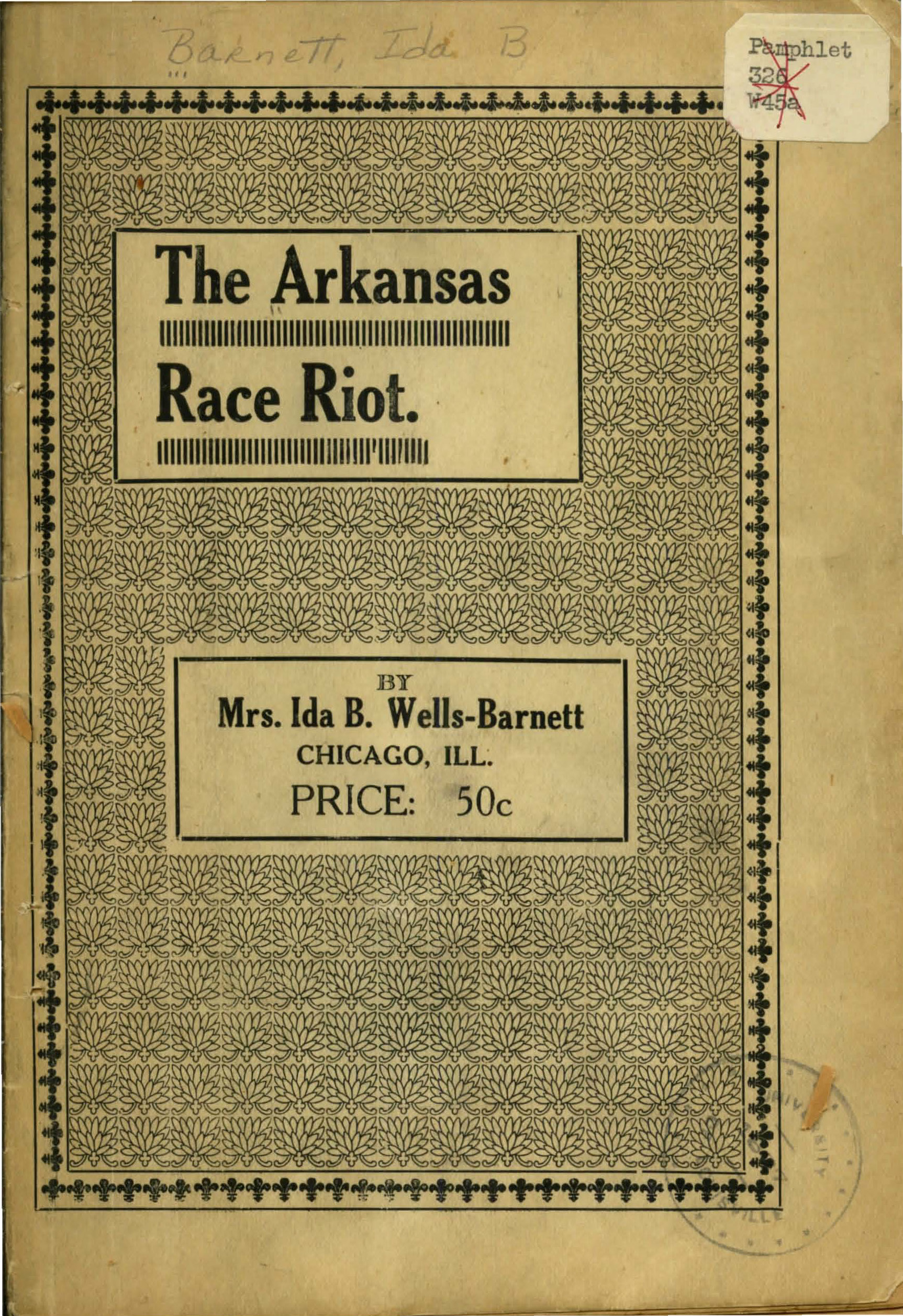Elaine Race Massacre Education Resources
Compiled by Kristin Mann
Teaching the Elaine Massacre involves contextualizing the event within the so-called “Red Summer” of 1919. This ArcGIS project, Race Riots of 1919, provides a geospatial representation of these anti-black riots.
Primary source accounts of the massacre and subsequent trials are numerous.
Chapter 6 of Grif Stockley’s book, Race Relations in the Natural State, provides an accessible overview of the Elaine Massacre, which can be used as a secondary source background reading. The Encyclopedia of Arkansas entry on Elaine is also a good starting place, as are the essays on this website and the Smithsonian Magazine Article “The Elaine 12.” High school teachers might compare these more recent accounts with earlier secondary sources, such as Ida B. Wells-Barnett’s The Arkansas Race Riot(1920), and O.A. Rogers, Jr.’s article “The Elaine Race Riots of 1919”(1960). How do the secondary sources tell the story? What sources do they use? What do they say caused the massacre? Who was involved and why? What were the effects?
Students might also compare these sources with the Wikipedia entry, and evaluate its accuracy. Discuss language, and have students determine whether this event should be termed a “race riot,” “massacre” or something different. Why might the language matter, and to whom?
Several secondary media sources also address the Elaine Massacre, and are easily accessible for teachers and students. The Winthrop Rockefeller Foundation produced educational materials and a video for classroom use, narrated by Ossie Davis. The video is available on YouTube in two parts.
The Elaine Race Riot: Tragedy & Triumph, part 1
The Elaine Race Riot: Tragedy & Triumph, part 2
A brief video produced by Little Rock television station KATV provides an overview and interview with author Grif Stockley. Similarly, a 2017 news report from Northwest Arkansas station KNWA introduces the topic.
More recently, the New York Post produced a shorter video, part of their Dark History series, entitled Elaine Massacre: The Bloodiest Racial Conflict in U.S. History.
Arkansas Social Studies Frameworks
United States History Since 1890
Era7.1.USH.2 Evaluate social, economic, and political motives for and impact of the involvement of the United States in World War I using multiple primary and secondary sources
Arkansas History grades 7-8
H.7.AH.7-8.6 Investigate social, economic, and political effects of World War I and World War II on various segments of the population in Arkansas
Arkansas History grades 9-12
Era4.4.AH.9-12.3 Evaluate effects of World War I on Arkansans using a variety of primary and secondary sources
Era4.4.AH.9-12.2 Analyze economic developments in Arkansas during the early 20th century
Sociology
SI.7.S.1 Examine factors that lead to social inequality
SI.7.S.2 Analyze various responses to inequality from multiple perspectives using primary and secondary sources
African American History
HJC.4.AAH.2 Analyze various experiences of African American men and women during the Jim Crow time period from a variety of perspectives using primary and secondary sources
SC.5.AAH.3 Analyze social, economic, and political actions of African Americans in the early 20th century
Additional lesson plan resources:
About the Author
Dr. Kristin Mann is a Professor of History and the Social Studies Education Coordinator in the Department of History at UA Little Rock.

